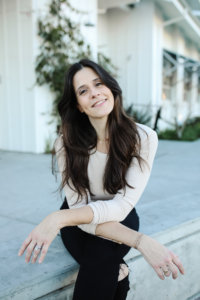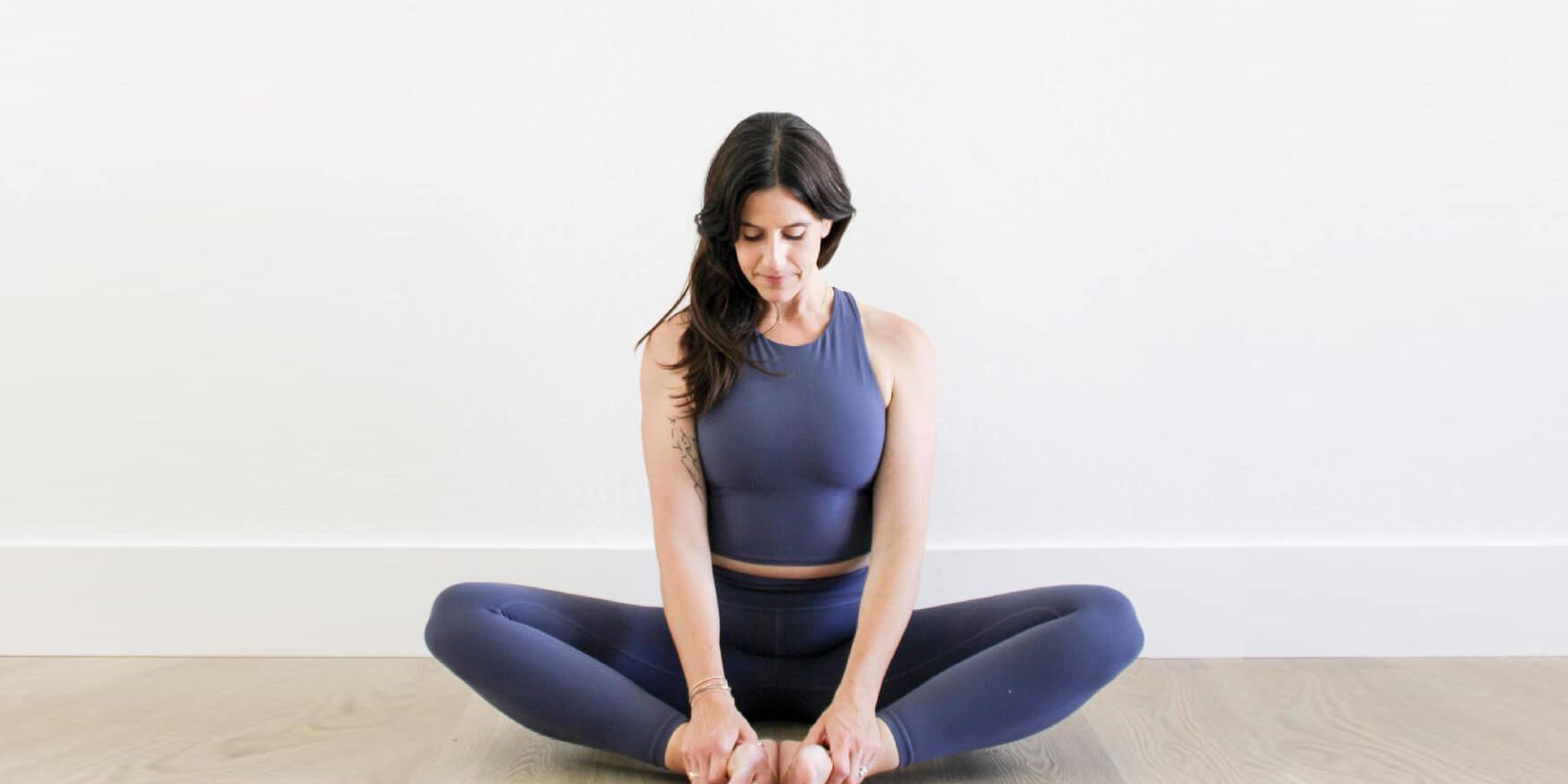I will never forget the day when I fell out of a yoga pose and said to myself, “It’s okay, Sarah.” I all but spun around to see who had said it. This was not my usual reaction to when things don’t go as planned. A blunder of any kind, whether on the mat or off, would usually lead me down a rabbit hole of negativity and rebuke.
But not this day.
On this day, as I wobbled on one leg and then ultimately put my hands down before I took out the entire row, I chose a different path. What was most surprising was that it didn’t feel forced. It wasn’t like I had to fake it, unlike so much of my self-love up to that point that usually left me feeling like an imposter, for example, repeating affirmations in the mirror like “I am amazing” when I felt anything but.
Instead, on this particular day, something shifted. It was as though the adult part of me finally stepped up and took the hand of the little girl side of me, who was constantly comparing and contrasting and afraid, and reassured her that everything was okay. It was in that moment that I finally understood what I was really learning in yoga: I wasn’t learning how to balance on one leg. I was learning how to pick myself up when I fall.
It has been almost fifteen years since that fateful class, and I would be lying if I told you that I never beat myself up or judge myself anymore. I am still human after all, and societal ideals continue to confuse my reality. But what I can tell you is that where I used to have to run past mirrors, lest I be sucked into a vortex of counting wrinkles and inspecting fat cells, I can now look at my reflection and not only say but mean “you are amazing.” I mean it because I get to bear witness to the amazing things my body does every single day on my yoga mat. And I am not talking about the fancy poses. Simply taking a breath is amazing. Isn’t it?
If we are willing to stop and look at our stuff, the yoga mat can be its own kind of mirror. One where we can both observe our tendencies and learn how to shift them.
As a yoga teacher, I now have the honor of imparting these lessons to students all around the world. When I see someone poking at their tummy or tensing their shoulders, I remind them how amazing it is that they even get to move their bodies. When I see someone fall out of a balance pose, I remind them that it is not about balancing but picking themselves right back up. When I see someone shake their head because they forgot a pose in the sequence, I remind them how cool it is that they noticed their mind wandering in the first place.
My yoga practice has taught me not only to be kind to myself but to truly love myself. And ever since that day, I have made it my mission to share that experience with others.
Self-love is not selfish
Can we clear something up really quickly? Self-love is not egocentric boastfulness. It is not some woo-woo ideal either. Self-love is the ability to pick yourself up when you fall down. It is reassuring yourself when you feel scared and being able to look in the mirror and truly love all of yourself.
Does that feel incredibly far away? I completely understand. Some days it still is for me, too. But this place of self-love is not some fantastical ideal. It is achievable by all of us, even if just for moments. We simply need a willingness to change our internal narrative away from the taskmaster striving for perfection and toward one of a loving friend who embraces all sides of us, especially the messy ones.
Here are five ways my yoga practice taught me to love myself that you can learn too, without ever having to step foot on a yoga mat:
- Being kind when you make a mistake: We do a lot of balance poses in yoga. It is easy to think that the goal is to hold the pose perfectly, but in fact the purpose of these poses is to observe our responses when we fall. This is why I encourage students to challenge their balance, either by changing their gazing point or allowing their mind to think of something else. Try it! It’s hard to stand on one leg when your eyes are darting around and you’re thinking about dinner. Then, in allowing ourselves to fall, we can learn how to get right back up again.
- Acknowledge your strength: There’s a misconception that yoga is all about flexibility, but it is as much about building strength as it is about touching your toes. In class, we do hold our bodies in a plank or warrior pose to witness that strength. Holding poses not only shows us how strong our bodies are but also our minds, as we observe ourselves persevere in the face of discomfort. How many challenges have you faced and overcome in your lifetime? Acknowledge your strength.
- Be flexible: Okay, so the number one cited reason that people try yoga according to recent research is But I like to think that we are learning how to stretch not only our hamstrings but also our expectations. It means letting go of control and being able to go with the flow. In class, we learn this by moving with the breath and accepting the body as it is in that moment. Off the mat, can we meet ourselves anew each day? Can we embrace the needs of the moment without expectation?
- Be confident: The most powerful poses are not the most complex or daring but the ones where we simply take up space. Social psychologist Ann Cuddy’s well-watched 2012 Ted Talk, “Your Body Language May Shape Who You Are,” explained the science behind what yogis had been feeling for thousands of years. When you expand your body, you feel more confident. We often make ourselves small out of protection or habit. Yoga teaches us how to get comfortable in positions of expansiveness. And you don’t need to do a full-on warrior pose to experience these effects. Simply hold your arms out to the sides in a V-shape for two minutes and see how powerful you feel. You deserve it.
- Just breathe: Every single breath we take is a gift. Our breath is our life force. This is evidenced by the fact that the term for the deepest exhale we can take is vital It is our lifeline, and breathing is not just about bringing oxygen into the body. Deep breathing can also help reduce stress and lower blood pressure. What separates yoga from many other forms of movement is the deep focus on breath. Pay attention to your breathing throughout the day. Set aside just one minute to quietly breathe with yourself and observe how that affects the rest of your day.
We don’t need to twist ourselves into a pretzel or stand on our hands to reap yoga’s benefits. We simply need to show up for ourselves, as we are in the moment, and in doing so, learn to embrace all sides. This is true self-love. Not selfies or selfishness. Treating ourselves as we would our dearest friend, because we are worth it.
 Sarah Ezrin is a freelance writer, world-renowned yoga educator, popular Instagram influencer, and mama based in the San Francisco Bay Area. Her willingness to be unabashedly honest and vulnerable along with her innate wisdom make her writing, yoga classes, and social media great sources of healing and inner peace for many people. Sarah is changing the world, teaching self-love one person at a time. For more information please visit her website www.sarahezrinyoga.com.
Sarah Ezrin is a freelance writer, world-renowned yoga educator, popular Instagram influencer, and mama based in the San Francisco Bay Area. Her willingness to be unabashedly honest and vulnerable along with her innate wisdom make her writing, yoga classes, and social media great sources of healing and inner peace for many people. Sarah is changing the world, teaching self-love one person at a time. For more information please visit her website www.sarahezrinyoga.com.






